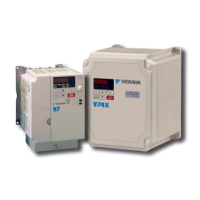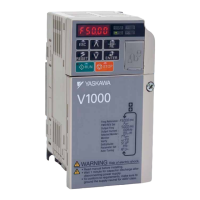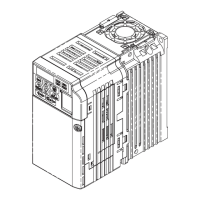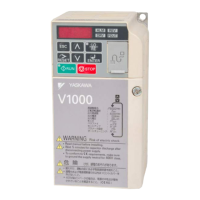0 V
3 V
10 V
Bias 30%
Gain 100%
Bias 0%
Gain 100%
100%
Monitor value
0%
Gain 50%
Bias 0%
Terminal AM
output
voltage
0 V
5 V
10 V
Gain 150%
Bias 0%
Gain 100%
Bias 0%
100%
Monitor value
0%
Terminal AM
output
voltage
Figure 5.74 Analog Output Gain/Bias Setting
When viewing the settings for H4-02, terminal AM will output a voltage that is equal to 100% of the monitor value (taking
the present gain and bias into consideration). When viewing the settings for H4-03, terminal AM will output a voltage that
is equal to 0% of the monitor value.
u
H5: MEMOBUS/Modbus Serial Communication
Through the drives built in RS-422/485 port (terminals R+, R-, S+, S-), serial communication can be performed with
programmable logic controllers (PLCs) or similar devices using the MEMOBUS/Modbus protocol.
The H5-oo parameters are used to set up the drive for MEMOBUS/Modbus Communications. Refer to MEMOBUS/
Modbus Serial Communication
on page 409 for detailed descriptions of the H5-oo parameters.
u
H6: Pulse Train Input/Output
A one track pulse train signal with a maximum frequency of 32 kHz can be input to the drive at terminal RP. This pulse
train signal can be used as the frequency reference, for PID functions, or as the speed feedback signal in V/f Control.
The pulse output monitor terminal MP, which can
be used in sinking or sourcing mode, can output drive monitors values
as a pulse train signal with a maximum frequency of 32 kHz.
Use parameters H6-oo to scale and set up the function for the pulse input terminal RP and pulse output terminal MP.
n
H6-01: Pulse Train Input Terminal RP Function Selection
Selects the function of pulse train input terminal RP.
No. Name Setting Range Default
H6-01 Pulse Train Input Terminal RP Function Selection 0 to 4 0
Setting 0: Frequency Reference
If the pulse input is set for this function and the frequency reference source is set to pulse input (b1-01/15 = 4), the drive
reads the frequency value from terminal RP.
Setting 1: PID Feedback Value
Using this setting, the feedback value for PID
control can be supplied as a pulse signal at terminal RP. Refer to b5: PID
Control on page 130 for details on PID control.
Setting 2: PID Setpoint Value
Using this setting, the setpoint value for PID control can be supplied as a pulse signal at terminal RP. Refer to b5: PID
Control on page 130 for details on PID control.
Setting 3: Speed Feedback for V/f Control (V/f Control only, Motor 1 only)
This setting enables simple speed feedback for V/f Control. A pulse signal can be used to input the motor speed to the
drive and thereby improve the speed control accuracy. Note that this speed feedback can only be a one track signal that
can not be used for direction detection. The drive needs a separate motor rotation direction signal. Refer to C5: Automatic
Speed Regulator (ASR) on page 148 for details on using Simple V/f Control with Speed Feedback.
n
H6-02: Pulse Train Input Terminal RP Scaling
The pulse train input scaling parameter sets the terminal RP input frequency that is equal to 100% of the signal selected
as the input value in parameter H6-01.
5.7 H: Terminal Functions
YASKAWA ELECTRIC SIEP C710606 16C YASKAWA AC Drive – V1000 Technical Manual
201
5
Parameter Details
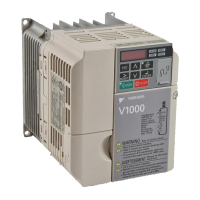
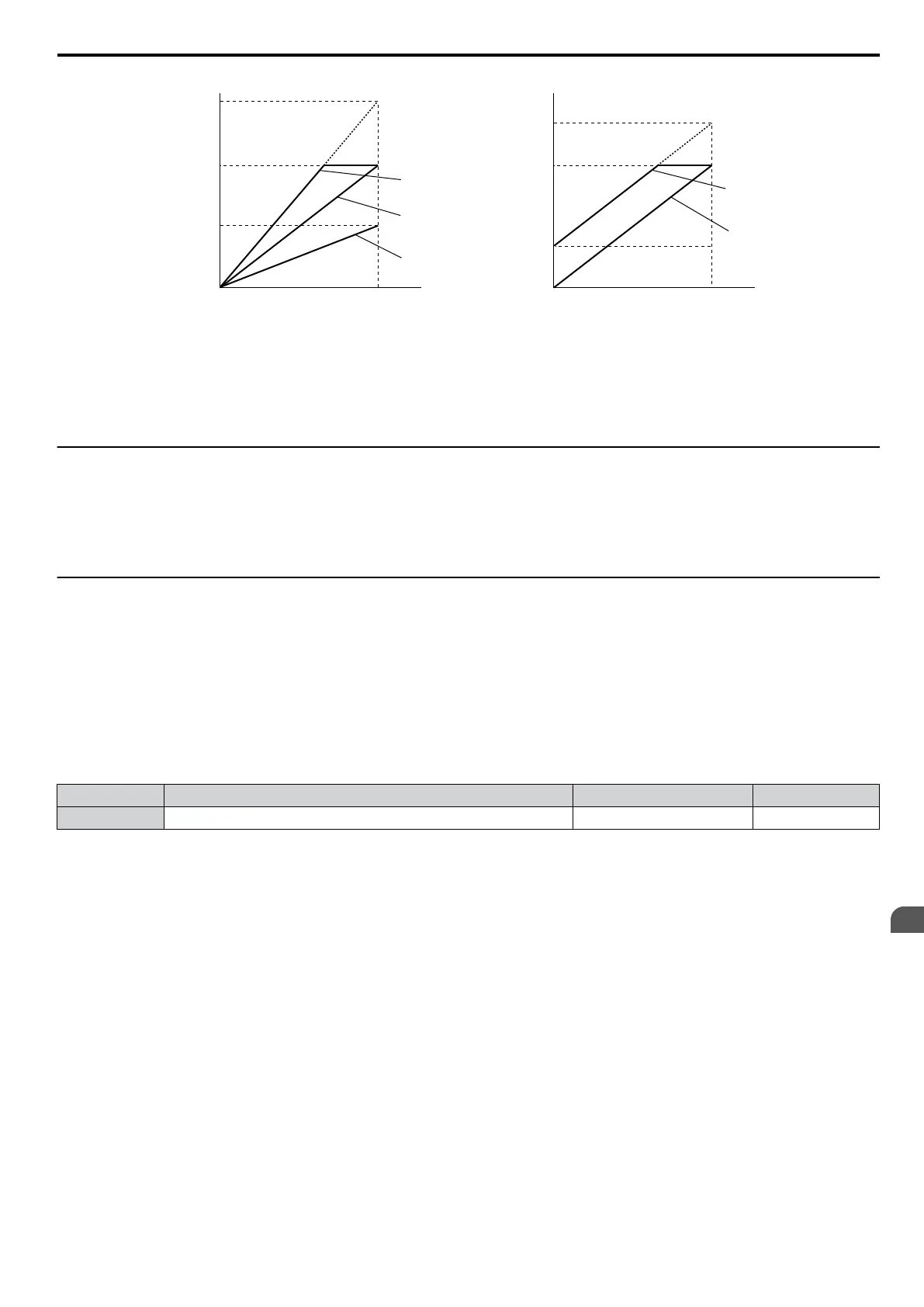